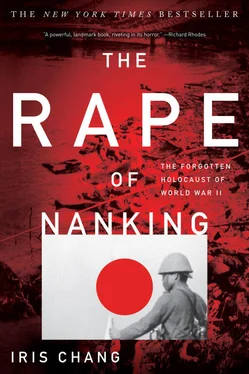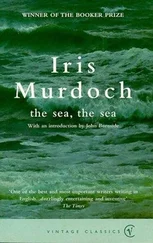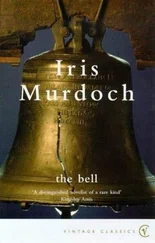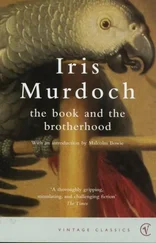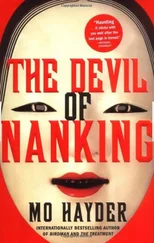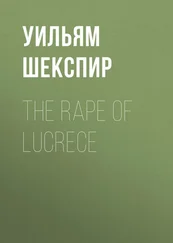69. By December an estimated ninety thousand Chinese troops: Sun Zhaiwei, “Nanjing datusha yu nanjing renkou (The Nanking Massacre and the Nanking Population),” Nanjing shehuai kexue ( Nanking Social Science Journal ) 37, no. 3 (1990): 79.
69. The troops transformed the face of Nanking: F. Tillman Durdin, “Japanese Atrocities Marked Fall of Nanking After Chinese Command Fled,” New York Times, December 22, 1937; “21 U.S. Citizens Now in Nanking: Only Eight Heed Warning to Evacuate Besieged City,” Chicago Daily News, December 7, 1937; 793.94/11466, General Records of the Department of State, microfilm, record group 59, National Archives; Harries and Harries, Soldiers of the Sun, p. 219.
69. In early December the military also resolved: A. T. Steele, “Nanking Ready for Last Stand; Defenders Fight Only for Honor: Suburban Areas Aflame; Chinese May Destroy City in Defeat,” Chicago Daily News, December 9, 1937, p. 2; Durdin, “Japanese Atrocities Marked Fall of Nanking,” p. 38; Minnie Vautrin, diary 1937–40, December 7, 1937, p. 99, Yale Divinity School Library.
70. “an outlet for rage and frustration”: Durdin, “Japanese Atrocities Marked Fall of Nanking,” New York Times , p. 38.
70. On December 2, hundreds of boxes of Palace Museum treasures: Minnie Vautrin, diary 1937–40, December 2, 1937, p. 93, Yale Divinity School Library.
70. Six days later, on December 8, Chiang Kai-shek: For information on the departure of Chiang, see Reginald Sweetland, “Chiang Flees to Escape Pressure of ‘Red’ Aides,” Chicago Daily News, December 8, 1937; Frank Tillman Durdin, “Japanese Atrocities Marked Fall of City after Chinese Command Fled,” New York Times, December 22, 1937, p. 38; 793.94/12060, report no. 9114, December 11, 1937 (day-by-day description of Japanese military maneuvers), restricted report, General Records of the Department of State, record group 59, National Archives.
70. During the battle of Shanghai: For statistics on the Chinese and Japanese air forces, see Sun Zhaiwei, 1937 Nanjing Beige, p. 18. See also Julian Bloom, “Weapons of War, Catalyst for Change: The Development of Military Aviation in China, 1908–1941” (Ph.D. dissertation, University of Maryland, n.d.), San Diego Aerospace Museum, document no. 28–246; Rene Francillon, Japanese Aircraft of the Pacific War (London: Putnam, 1970); Eiichiro Sekigawa, Pictorial History of Japanese Military Aviation , ed. David Mondey (London: Ian Allan, 1974); Robert Mikesh and Shorzoe Abe, Japanese Aircraft, 1910–1941 (Annapolis: Naval Institute Press, 1990).
71. During the battle of Shanghai, Italian-trained Chinese pilots: Bergamini, Japan’s Imperial Conspiracy, p. 11.
71. On December 8, the day Chiang and his advisers left the city: A. T. Steele, “China’s Air Force, Disrupted by Superior Planes of Foes, Leaves Nanking to Its Fate,” Chicago Daily News, December 8, 1937.
71. Second, the government officials who moved to Chungking: Nanking Massacre Historical Editorial Committee, ed., (Zhongguo dier lishe dang an gan guan, Nanjing shi dang an guan) Archival Documents Relating to the Horrible Massacre Committed by the Japanese Troops in Nanking in December 1937 , No. 2, National Archives, Nanking Municipal Archives (Nanking: Jiangsu Guji chubanshe [Jiangsu Ancient Books Publisher], November 1987), p. 46.
71. Third, the troops did not come from the same regions: Wei Hu, former paramedic for the Chinese military in Nanking, interview with the author, January 17, 1997, in Sunnyvale, California.
71. Fourth, many of the “soldiers” in this army: Ibid.
71. Tired, hungry, and sick: Archival Documents Relating to the Horrible Massacre (1987), p. 46.
71. Worst of all, Chinese soldiers: Ibid.
72. “protect innocent civilians”: Quoted in Yin and Young, The Rape of Nanking, p. 32; Xu Zhigeng, Lest We Forget: Nanjing Massacre, 1937 (Beijing: Chinese Literature Press, 1995), p. 43.
72. “Our army must fight to defend”: Sun Zhaiwei, 1937 Nanjing Beige, pp. 98–99; Xu Zhigeng, Lest We Forget, p. 44.
72. Privately, however, Tang negotiated for a truce: General Records of the Department of State, 793.94/11549, record group 59, National Archives; “Deutsche Botschaft China,” document no. 203 in the German diplomatic reports, National History Archives, Xingdian, Taipei County, Republic of China. Chiang’s rejection of the proposal came as a shock to Tang and the International Committee for the Nanking Safety Zone. In a letter of January 24, 1938, W. Plumer Mills wrote, “General Tang had assured us that he was confident that Gen. Chiang would accept the truce proposal, so we were surprised to receive a wire from Hankow the next day to the effect that he would not”; from the family archives of W. Plumer Mills’s daughter, Angie Mills.
73. On December 10, the Japanese waited for the city to surrender: Xu Zhigeng, Lest We Forget, p. 44; Bergamini, Japan’s Imperial Conspiracy, p. 29.
73. “From the 9th to the 11th of December”: Tang Sheng-chih to Chiang Kai-shek, telegram, reprinted in Archival Documents Relating to the Horrible Massacre (1987), p. 35.
73. At noon on December 11, General Gu Zhutong placed a telephone call: Sun Zhaiwei, 1397 Nanjing Beige, pp. 122–23.
74. Tang received a telegram: Ibid, p. 123.
74. At 3: 00 A.M. on December 12: Ibid., p. 124.
75. But then electrifying reports reached Tang: Yin and Young, The Rape of Nanking, p. 38.
75. Sperling agreed to take a flag: Commanding Officer C. F. Jeffs to the Commander in Chief, U.S. Asiatic Fleet (letterhead marked the U.S.S. Oahu ), February 14, 1938, intelligence summary for the week ending February 13, 1938. The report included an excerpt from a missionary letter (from George Fitch’s diary, name not given), which was not given to the press for fear of reprisals from the Japanese; Office of the Chief of Naval Operations, Division of Naval Intelligence, General Correspondence, 1929–42, folder A8–21/FS#3, box 195, entry 81, record group 38, National Archives; see also George Fitch, My Eighty Years in China (Taipei: Mei Ya Publications, 1974), p. 102.
75. That afternoon, just minutes before his commanders: Sun Zhaiwei, 1937 Nanjing Beige, pp. 124–26.
76. Not surprisingly, the order to retreat: Ibid.
76. Their soldiers continued to fight the Japanese: Wilson, When Tigers Fight, p. 70.
76. Even in the larger, tragic scheme of things: Durdin, “Japanese Atrocities Marked Fall of Nanking”; A. T. Steele, “Reporters Liken Slaughter of Panicky Nanking Chinese to Jackrabbit Drive in US,” Chicago Daily News, February 4, 1938; F. Tillman Durdin, “U.S. Naval Display Reported Likely Unless Japan Guarantees Our Rights; Butchery Marked Capture of Nanking,” New York Times, December 18, 1937; author’s interviews with survivors.
77. But before the gate lay a scene: For details of the congestion, fire and deaths before the gate and the desperate attempts to cross the river, see A. T. Steele, “Panic of Chinese in Capture of Nanking, Scenes of Horror and Brutality Are Revealed,” Chicago Daily News, February, 3, 1938, p. 2; Arthur Menken, “Witness Tells Nanking Horror as Chinese Flee,” Chicago Tribune, December 17, 1937, p. 4; Durdin, “Japanese Atrocities Marked Fall of Nanking,” p. 38; Fitch, My Eighty Years in China, p. 102; Wilson, When Tigers Fight; Gao Xingzu, Wu Shimin, Hu Yungong, and Zha Ruizhen, “Japanese Imperialism and the Massacre in Nanjing”; author’s interviews with survivors.
Читать дальше
